
With businesses at a standstill, even with the modified enhanced community quarantine (MECQ), Philippine fashion designers are collectively bemoaning the uncertain future their sector faces.
“We’re in limbo. It feels useless to plan. Everything’s up in the air,” says Jojie Lloren, who, like his colleagues, has had no activity or income from his atelier since the lockdown.
Even the fashion school Lloren cofounded and runs, Fashion + Arts + Business (FAB) Creatives, remains closed. While some courses can be taught online, Lloren and the FAB board have opted not to go that route because “I wouldn’t see what the students are doing, and I wouldn’t be able to correct them,” he says.
Joey Samson, who rushed home to his family in Cavite at the start of the lockdown, hasn’t been able to return to his flat-cum-atelier in Makati, since the village wouldn’t allow anyone in until end of May.
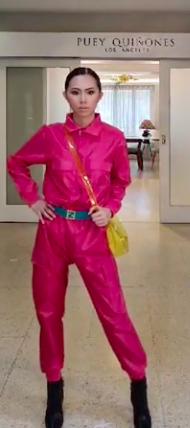
by Quiñones made
of water-repellent
microfiber
In the beginning, Rhett Eala, whose atelier is in the same village as Samson’s and has stay-in workers there, was able to check in on his staff, who were making face masks. “Now they wouldn’t let Rhett in,” says Samson. “He only gets to talk to his workers at the village gate.”
JC Buendia, whose shop is also nonoperational, like Samson, has had to dip into his savings to send a weekly allowance to his workers, many of whom live outside Metro Manila.
“I have a small team, so it’s not so hard to extend a little help. But I don’t know how long I can keep doing that, and I don’t know if I should put it down as advanced salary,” Buendia says. “We’re high profile, but the reality is that we’re small businesses.”
“How am I going to pay rent when there’s no income coming in?” asks Samson. “I hope our landlords abide by the Bayanihan Act provision of a grace period with no penalties or charges incurred.”
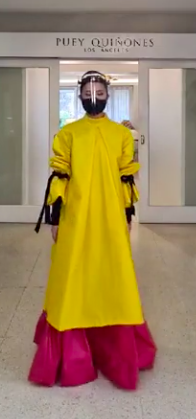
Zero income
Most of these fashion designers live on made-to-order demand, so with no parties and events, and weddings postponed, it’s zero income for their shops.
“My partner Roland Alzate and I have one client who, lucky for us, still ordered clothes, even through the ECQ,” says Noel Crisostomo, whose boutique Queen Street West in Greenhills remains closed.
Crisostomo has one home-based sewer who makes the clothes—he just sends the precut materials via Lalamove, and when the dress is finished, it’s sent via courier to the client. “No alterations, no contact,” he says.
Since Crisostomo makes mostly day dresses and workwear, he’s not feeling the pinch as much as those making wedding dresses and
special-occasion wear. “Some of my clients are maybe bored at home, so they still message me for requests of things they want to wear to work when the ECQ is over.”
“My last wedding was on the weekend before the lockdown,” says Buendia. “I was so tired and burnt out then that I was looking forward to sleeping for three days. Be careful what you wish for. I didn’t expect things to last this long.”
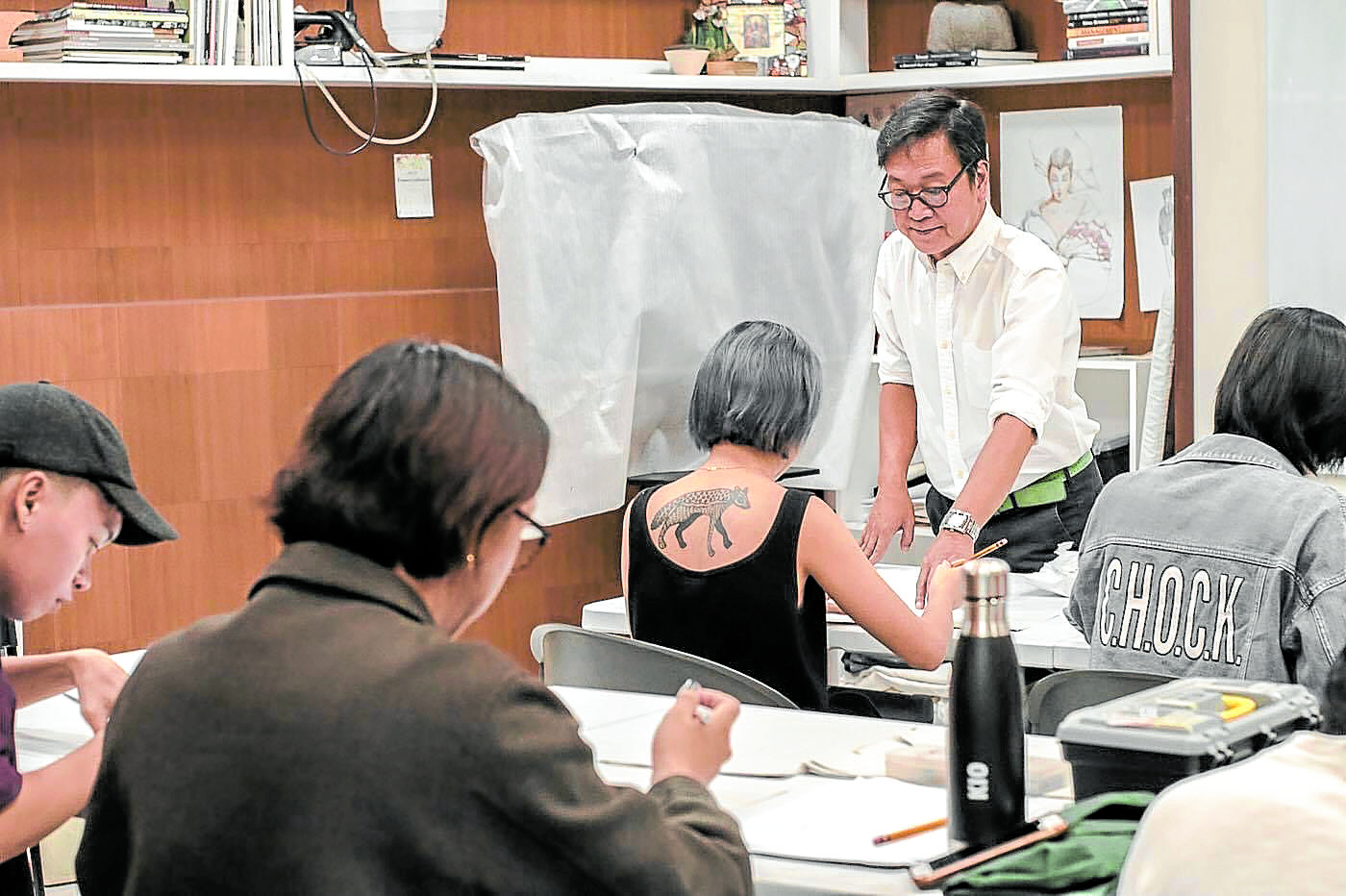
No transportation
Still, with no public transportation available, these designers’ workers couldn’t report for work even if they wanted to. And even when there’s transport, they worry about how to observe social distancing in their limited work spaces.
Samson says he’s considering a reduced workforce for each day, depending on job orders. He’s also proposing a work-from-home setup where his workers report only once a week to collect material and deliver the finished product. If worse comes to worst, he doesn’t discount the possibility of scaling down and moving his operations to Cavite, in his family home.
“It’s the fitting appointments that are going to be tricky,
safety-wise, when we resume operations,” Crisostomo says. “We have to consider that.”
Most of them are rethinking their business models. Online retail seems to be the viable option. “When the dust settles, I can make concrete plans,” Lloren says.
Buendia and industry friends Jing Monis, Vic Barba and Jackie Aquino have just set up a Facebook group called Buy Filipino, meant as selling platform for designers.
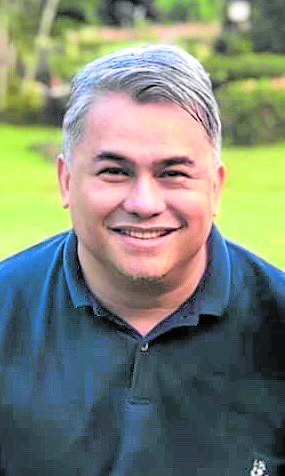
Virtual fashion show
Puey Quiñones, who’s based in Los Angeles but got stuck in Manila during the ECQ, has been quick to adapt. (He was in the Philippines to relaunch his eponymous brand.)
On May 18, he staged his first virtual fashion show on Facebook with a pocket collection of personal protective equipment-inspired (PPE) wear. It will be sold on his soon-to-launch website, pueyquiñones.com. Like many designers, Quinones also volunteered to make PPE for health-care front-
liners. Then he was tapped by AirAsia and Fila to make PPE uniforms for their staff. “Outside of that, I’ve been getting inquiries from individuals. I saw the demand,” he says.“I don’t know how long this will be. What I know is that to survive, you must be creative and resourceful,” says Quiñones, who’s also making face shields, face masks and hand sanitizer.
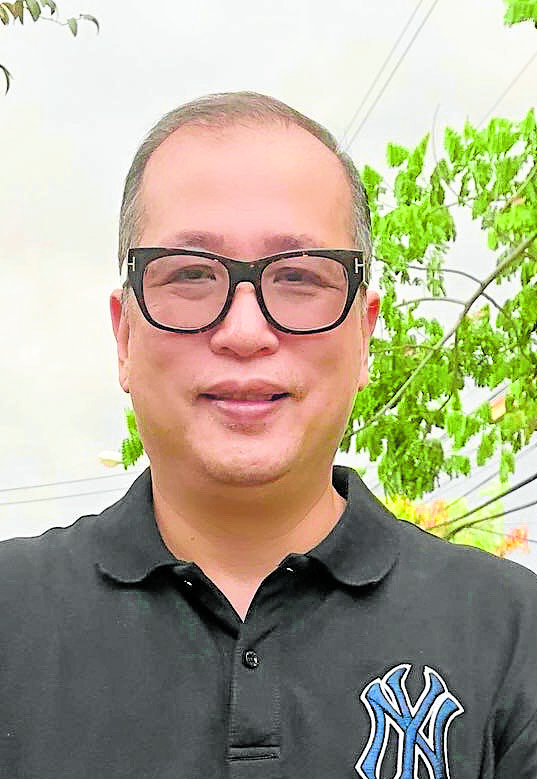
Dialogues
“The situation is very fluid and uncertain. We cannot say with all confidence that we have a plan to overcome this crisis. We are, however, certain that we must all band together as an industry to restart,” says Amina Aranaz Alunan, president of the Fashion and Design Council of the Philippines (FDCP).
The FDCP recently launched the “Fashion Forward Dialogues,” “a series of dialogues meant to spark hope and innovation during this time. It is meant to be an online venue where ideas may be born to push us into action,” says Alunan.
“Apart from this we hope to craft a recovery plan,” she adds. “We have started this by spearheading an online survey that is meant to provide data on the impact of the pandemic on the Philippine fashion industry. From the data, we will try to carve a growth path and look for ways to help each other, and also how we can possibly get support from the government or the private sector.”

Optimism
Alunan’s own business, the accessories brand Aranaz and its eponymous boutiques, has also remained closed with the absence of public transportation for her sales staff.
“We do not have a semblance yet of what the customer mindset will be,” she says. “We plan to strengthen our online store and jump into product development to create product lines that are more relevant to the times.”
She remains optimistic, however. “I don’t think the accessories market will disappear completely. But perhaps new types of fashion accessories will emerge that are related more toward protection and safety.”
Buendia says he gets so dismayed at times that he’s losing hope. “I don’t want to add politics into this, but when you read the news and you watch the government’s press cons . . . There’s no clear plan on how we can get out of this situation.”
“I think optimism lies in the consciousness of people,” says Lloren. “We have to change our ways, to be environment-conscious and rethink our lifestyle. Fashion is the second biggest pollutant. We can strive to be 100-percent eco-friendly.”
“One way for us to crawl out of this is to share info,” says Crisostomo. “That’s what’s working for me. You can’t go at it alone. You can’t be greedy. Relationships matter—with your colleagues, suppliers, clients, workers.”













































